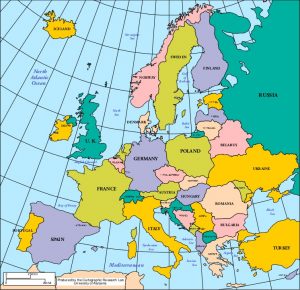Europe

The many cultures of Europe can be seen through the art, architecture, film, different types of music, economic customs, literature, philosophy, and, yes, the food of each region. In spite of the man differences we see today from region to region, European cultures are largely rooted in what is often referred to as a "common cultural heritage." Historically, European cuisines have developed in the European royal and noble courts. European nobility was usually arms-bearing and lived in separate manors in the countryside. Before the middle ages, the knife and spoon were the primary eating tools. Solid foods were cut into small bits with knives—the royalty had their foods precut for them—and eaten with the fingers or sometimes by combining the knife and spoon in a variation on chopsticks! Spoons were used to eat soups and stews and other soft foods. Perhaps surprisingly, the fork was a relative late-comer (Catherine de Medici apparently introduced forks to France during her reign in the 16th century). Today, most dishes are intended to be eaten with cutlery and only a few finger foods are meant to be eaten with the hands in polite company.
Formal European dinners are served in distinct courses. European presentation evolved from service à la française, or bringing multiple dishes to the table at once, into service à la russe, where dishes are presented sequentially. Usually, cold, hot and savory, and sweet dishes are served strictly separately in this order, as an appetizer or soup, as entrée and main course, and as dessert. Dishes that are both sweet and savory were common earlier in ancient Roman cuisine, but are relatively less common today, with sweet dishes being served only as dessert…except of course for that Thanksgiving mainstay, sweet potatoes with marshmallows, and of course orange chicken at Chinese restaurants! A service where the guests are free to choose foods by themselves is termed a buffet, and is seen in various versions throughout Europe, such as the breakfasts served at many hotels in German and Scandinavian smorgasbord.